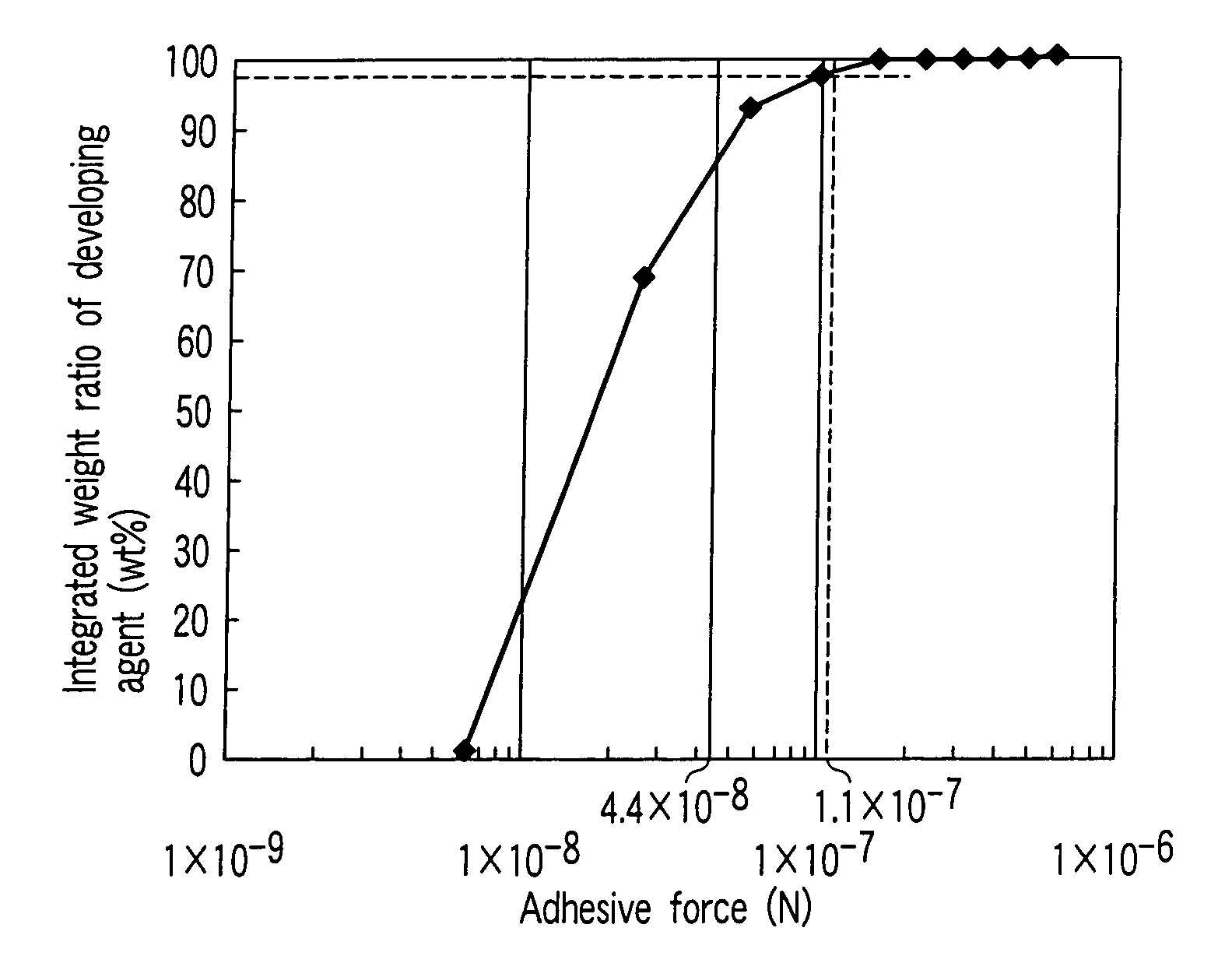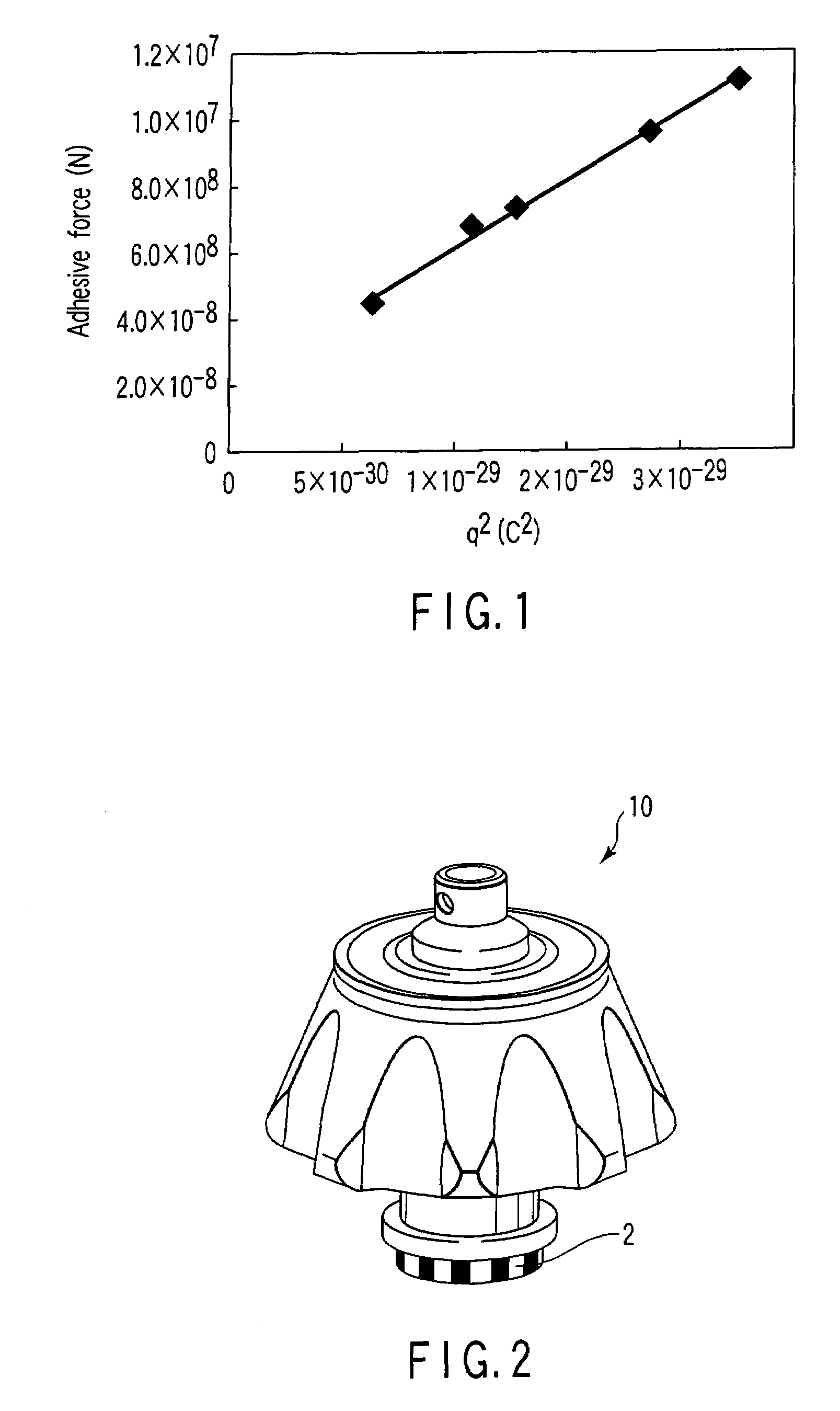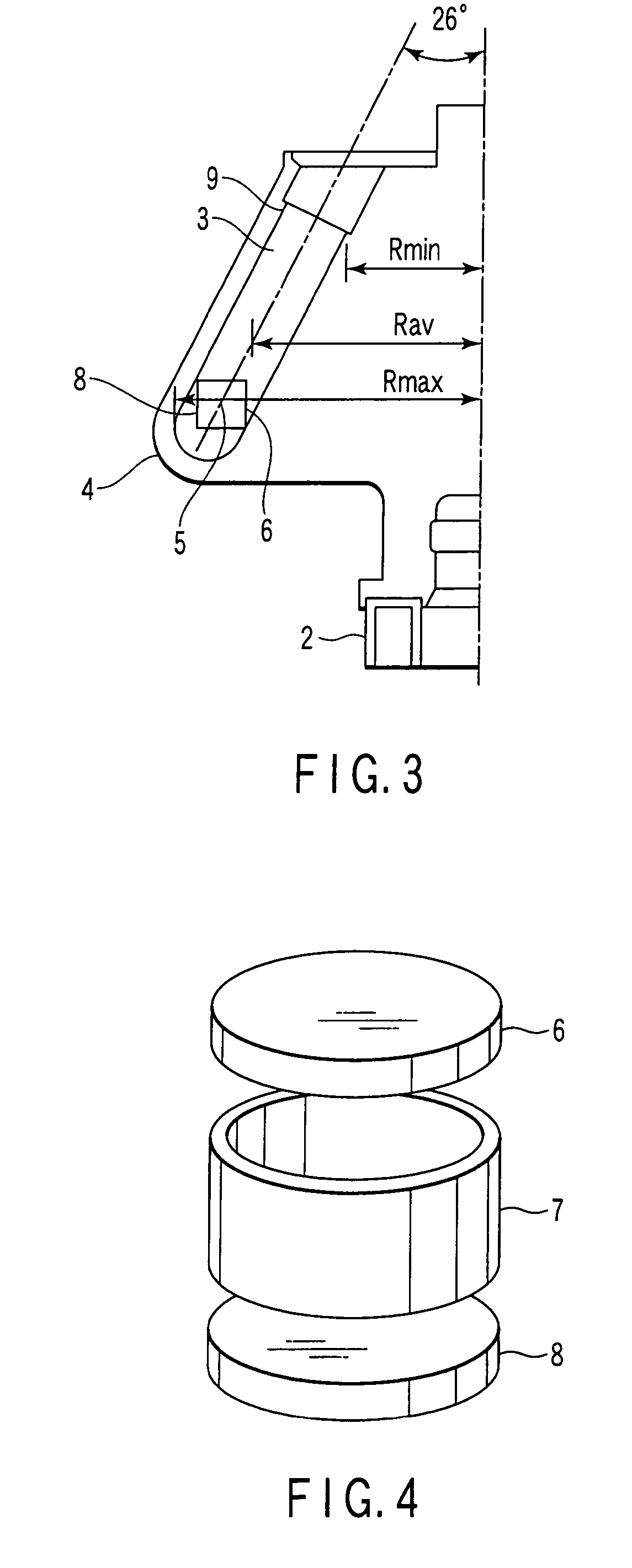Method for forming image and image forming apparatus
a technology of image forming apparatus and method, which is applied in the direction of electrographic process apparatus, instruments, developers, etc., can solve the problems of high electric field required for the transfer of toner, high risk of aerial discharge, and difficult to manufacture toner, etc., and achieves excellent transfer efficiency, high degree of automation, and high degree of automation.
- Summary
- Abstract
- Description
- Claims
- Application Information
AI Technical Summary
Benefits of technology
Problems solved by technology
Method used
Image
Examples
experimental examples
[0116]Four kinds of toners and two kinds of carriers were prepared as follows.
[0117]Preparation of Toner A:
[0118]28 parts by weight of polyester resin, 7 parts by weight of Carmine 6B, 5 parts by weight of rice wax and one part by weight of carnauba wax were mixed and kneaded by making use of Kneadex (YPK Co., Ltd.) to prepare a master batch. After being subjected to coarse crushing, the master batch is further mixed with 58 parts by weight of polyester resin and one part by weight of CCA. The resultant mixture was then kneaded, coarsely pulverized and finely pulverized to obtain particles. Then, by means of elbow jet classification, parts of the particles having a particle diameter of 8 μm or more and having a particle diameter of 3 μm or less were removed to obtain toner particle having a volume average particle diameter of 5.3 μm.
[0119]To 100 parts by weight of the toner particle thus obtained, 3.5 parts by weight of silica having a primary particle diameter of 20 nm was added as...
experiment 1
[0130](1) A Combination of Toner A and Carrier α:
[0131]9 parts by weight of Toner A was mixed with 91 parts by weight of Carrier α to obtain a developing agent.
[0132]The developing agent thus obtained was applied to an image forming apparatus having the same structure as shown in FIG. 5 except that a film having the same photosensitive layer as the photoreceptor was wound around the surface of photoreceptor, thereby performing electrification, exposure and development of toner.
[0133]The film where the toner was developed was taken out as it is and the distribution of adhesive force of toner was measured. The results are shown in FIG. 9.
[0134]FIG. 9 shows a graph illustrating one example of a first distribution of adhesive force to be employed in the present invention. This graph illustrates the relationship between the adhesive force of the developing agent and the added weight ratio of the developing agent having the aforementioned adhesive force.
[0135]As shown in FIG. 9, an averag...
experiment 2
[0148](1) A Combination of Toner C and Carrier β:
[0149]11 parts by weight of Toner C was mixed with 89 parts by weight of Carrier β to obtain a developing agent.
[0150]The developing agent thus obtained was applied to an image forming apparatus having the same structure as shown in FIG. 6 except that a film having the same photosensitive layer as the photoreceptor was wound around the surface of photoreceptor, thereby measuring the distribution of adhesive force, the quantity of residual toner, and performing the life test in the same manner as in Experiment 1.
[0151]As a result, an average value of the adhesive force was 1.04×10−7 (N). Further, the adhesive force which was 2.5 times as high as this average value was 2.6×10−7 (N). The ratio of the developing agent having an adhesive force of not less than 2.6×10−7 (N) was 1.5% by weight. The quantity of the residual toner was 1.4% by weight.
[0152]Further, when the formation of image was performed by making use of this developing agent...
PUM
 Login to View More
Login to View More Abstract
Description
Claims
Application Information
 Login to View More
Login to View More - R&D
- Intellectual Property
- Life Sciences
- Materials
- Tech Scout
- Unparalleled Data Quality
- Higher Quality Content
- 60% Fewer Hallucinations
Browse by: Latest US Patents, China's latest patents, Technical Efficacy Thesaurus, Application Domain, Technology Topic, Popular Technical Reports.
© 2025 PatSnap. All rights reserved.Legal|Privacy policy|Modern Slavery Act Transparency Statement|Sitemap|About US| Contact US: help@patsnap.com



